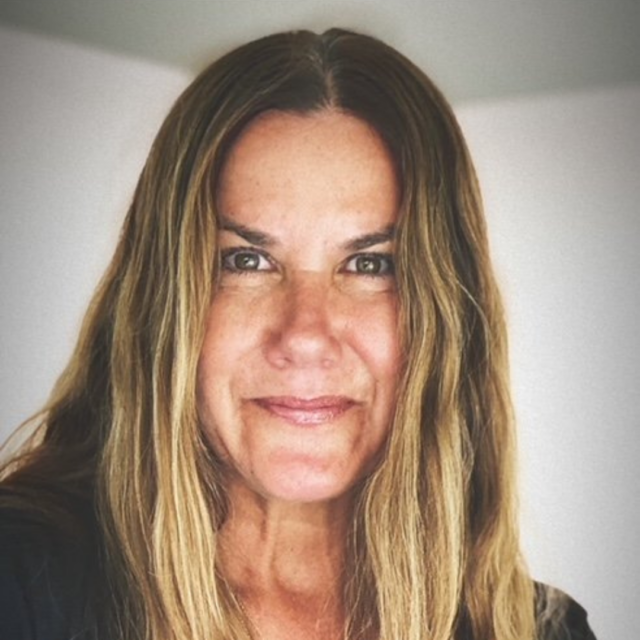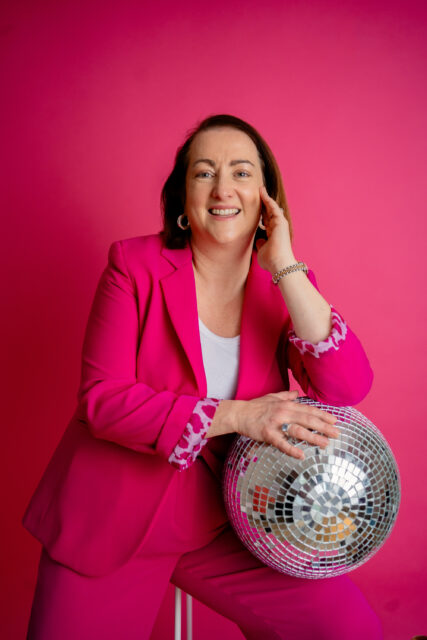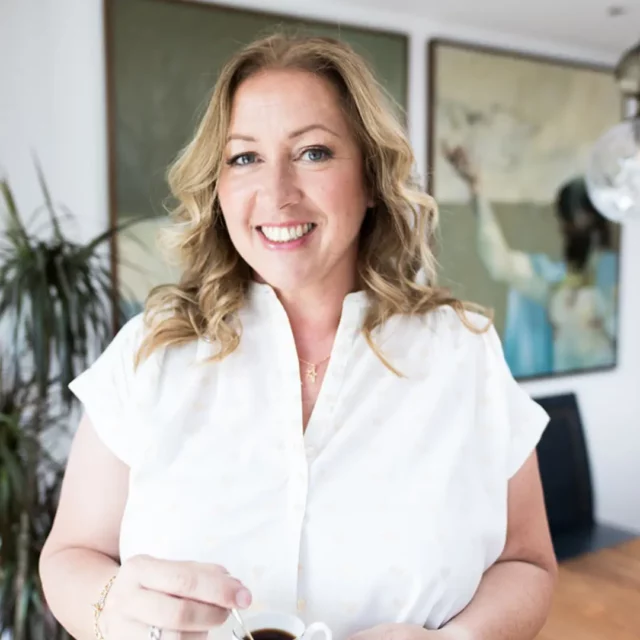What does the future of the UK High Street look like?
Catherine Erdly: Where is the retail industry headed when it comes to bricks and mortar stores? We often hear headlines of the UK high street in decline and all kinds of scare stories. And in today’s episode, I wanted to take the time to go through some recent research, recent numbers in terms of what’s actually happening in the UK high street, as well as share my thoughts in terms of what’s ahead for bricks and mortar.
This is purely my opinion based on what I’ve read and what I believe to be true. And I would love to hear what you think of the future of the high street and why not share, come over to resilient retail club on Instagram and let me know what you think about today’s episode. Share where you think the industry is heading.
Welcome to the Resilient Retail Game Plan, a podcast for anyone wanting to start, grow or scale a profitable creative product business with me, Catherine Erdley. The Resilient Retail Game Plan is a podcast dedicated to one thing, breaking down the concepts and tools that I’ve gathered from 20 years in the retail industry and showing you how you can use them in your business.
This is the real nuts and bolts of running a successful product business, broken down in an easy, accessible way. This is not a podcast about learning how to make your business look good. It’s the tools and techniques that will make you and your business feel good. Confidently plan, launch, and manage your products, and feel in control of your sales numbers and cash flow to help you build a resilient retail business.
Analyzing the Decline of UK High Street
Catherine Erdly: As is so often the case, the headlines about the retail industry and High Street in particular can sometimes sound alarming, but they don’t often really deal with the nuance underneath the numbers.
A lot of the time we have been hearing how stores are closing in the UK and it is true that when you look at the data, we are still seeing a net decline in the number of retail outlets that there are in the UK overall. However, a lot of that decrease is actually coming from big retail chains In fact most recent figures that I saw which was for the first half of 2024 showed that they ccontinues to be a stable but steady decline in the number of retail outlets trading.
However, most of the decline came from just three categories, which included things like chemists, which is you’ve, we’ve all heard how a large number of boots, for example, are closing in markets where they had duplicates also a large number of banks closing and other bigger chains, basically closing.
The Rise of Independent Retailers
Catherine Erdly: So, we are seeing numbers of independent retailers are staying more stable overall. And in fact, in some areas we’ve seen increases. So for example, there were 461 independent record stores last year compared to just 339 10 years previously. There are actually more independent department stores, which is up over about 10 to 15 percent over the last 10 years. And there are now over a thousand independent booksellers, which is up about 20 percent from their lowest point in 2016. So we are seeing stored numbers decline overall, but within that we are definitely seeing more independent retailers popping up. It’s not to say that it is all, you know, sunshine and roses for independent retailers, but I think it’s important to understand that the overall makeup and the different stores that are on the high streets are all changing.
And for me personally, many of you may remember the whole idea about the clone high streets back in the 90s and the early 2000s, for example, we were seeing high street after high street where it was all just change. You could be picked up somewhere and put down somewhere else and you wouldn’t necessarily know where you were.
Whereas now I believe that yes, it is difficult and it has an impact on footfall when you see big chains pulling back from their retail spaces. But at the same time I believe that we’ve seen a much greater improvement in the diversity of the retail outlets that we see. And there are certainly plenty of high streets and central areas where we are seeing a resurgence and a nice mix of independence.
Impact of Online Shopping on Retail
Catherine Erdly: I think it’s also really important to recognize that we often hear about how online shopping is killing off the high street. And I wanted to do a bit of digging into the numbers behind this because this has been a trend that I’ve been following for years. And if you ever want to go check it out, Go and look at the office of national statistics, the ons.gov.uk and have a look at their percentage of retail sales that happen online. It’s a report that has been tracking data point for years and years and years. And it’s really fascinating to watch how it shifts. During the pandemic this was something that I talked about a lot because we saw it really skyrocket.
What we’re seeing now is that around 25 percent of all retail spend is happening online. So in other words, for every pound that is spent in the UK on retail, 25 pence of that is happening online. And that number has increased over the years pre pandemic. So October, 2019. So if we’re looking at exactly six years ago, that number was at 19 percent and it had been steadily increasing from 1995 when e-commerce really became a thing.
It had been gradually but steadily increasing over the years. Then during the pandemic, what we saw was it jumped up massively. It went from 19 percent to over 30 percent in very, very short space of time as everything got locked down. And the original thought process was that it was going to accelerate this trend by two to three years so that we were going to shoot forward and e-commerce was going to stay at that heavier, that higher level.
What we actually saw was post pandemic. And you can see this really clearly if you look at the graph on the ONS post pandemic, this number actually dropped down. And we had something like 11 months or even longer of steady decline in the e-commerce penetration. So in other words, we didn’t stay at that high level post pandemic.
It definitely reverted back and there were definitely some bumpy months for e-commerce, for example, in 2022 and even into 2023, where you could really see the impact of people going back to stores. But what you’re seeing now is that we’ve effectively re-stabilize and that percentage has been increasing.
So yes, we are seeing more people buying online. However, it wasn’t quite as dramatic of an impact from the pandemic as it was originally thought. And five years on from that pre-pandemic time period, we can see that we’re now at around a quarter of all sales are happening online.
However, this may lead you to think, right, well, what’s even the point of having a bricks and mortar store or is it all going to shift online? I still don’t think it’s all going to shift online. I still think that we’re seeing a difference between different types of shopping.
Chore Shopping vs. Cherish Shopping
Catherine Erdly: So we have got chore shopping and cherish shopping.
So chore shopping is, you know, everything that you just need for the house. You need more toilet roll or, or kitchen roll, or you need washing up liquid, that kind of thing. And the more practical elements. Those are the things that made more of a switch to online quicker because frankly, it’s not super exciting or interesting to go around the shops and look for those.
Some people may enjoy that, who knows, but generally speaking, that’s not going to be the thing that people enjoy so much.
Then you’ve got this idea of cherished shopping, which is things like clothing and gifting and just the sheer enjoyment of going around shop and having a look at things and Touching and feeling and experiencing something physical and purchasing that.
Now I don’t have numbers for how those two different types of shopping stack up in their online penetration, but I am willing to bet that is the chore shopping that has really escalated in terms of shifting online, whereas the enjoyable side of shopping.
That has really has stayed more stable.
Challenges in E-commerce and Retail Trends
Catherine Erdly: The other thing I think is really important to think about as well is that e-commerce has not exactly been completely problem free over the last few years. And we’re seeing more and more with big retailers, people like next and ASOS are looking to implement paid returns.
I think we’re really beginning to understand that the economics of online shopping is not necessarily as good. and easy as at one point people thought that it was. I’ve been in the retail industry a really, really long time now. And at some point, everybody thinks something is the savior of the retail industry.
And I remember way back when I first started in year 2000, everyone was talking about international expansion and how multinational retail was going to be the thing that made Businesses grow and expand. And then what a lot of retailers found when they started their international arms was that it was really, really hard to trade in other countries.
It was really hard to understand a market that wasn’t your own, and it was really expensive and not necessarily profitable. And lots of people tried international expansion and then pulled it back and looked at different ways of serving an overseas market.
And th e-commercece came along.
The Rise of E-commerce
Catherine Erdly: And again, when e-commerce really started becoming a big thing. Now, when I very first started in retail in 2000, then, you know, it wasn’t that common or always for a business to have a transactional website. In fact, the first few years of my career, I worked in two different businesses that had catalogs and stores and didn’t even necessarily have a transactional website for a few years.
So when e-commerce first came along, there was this whole discussion about, Oh, you know, the number of people that you need to generate a million pounds in e-commerce is so much lower than the number of people you need to generate a million pounds in stores.
Challenges of E-commerce Profitability
Catherine Erdly: And so again, very quickly, people felt like the answer to profitability in retail was to go for e-commerce and definitely we have seen obviously a big growth in e-commerce, but I think what’s interesting to me is the dynamics of it and the profitability is not as problem free as, as maybe first thought, as I’m sure any of you listening with an e-commerce brand can attest to.
But what I find interesting is when we look at people like Lucy and Yak, or Scamp and Dude. In fact, when I spoke to Jo Touchner Sharpe the founder of Scamp and Dude, she spoke at the Retail ROAR Summit in February, but prior to that, I’d had another interview with her where I talked to her for a Forbes article I wrote all about their expansion into bricks and mortar.
And what I found really interesting was that they very much saw this expansion into bricks and mortar as a financial decision for the business. So Jo was talking about how they looked at the cost of the returns. If you’ve got a dress and you send it out to a customer and it comes back in less than resellable condition, you have got to go through a process called reverse logistics.
For example, I worked for the clothing company coast before they became owned by Boohoo and they spent a lot of money running Dresses through a steam tunnel and rebagging it in poly bags and rehanging it in the warehouse so that they could send it out to stores or send it out to a customer again.
So the reverse logistics of bringing back something like a dress, which dresses have huge returns rates. Anybody who sells dresses knows that the fit is so tricky. That is one of the product areas that has the highest returns rates. So if you’re spending all that money to bring something back, Jo had basically worked out how much it was costing them, and then they worked out that compared to having a store and the cost of the store.
And they decided that actually it worked out more affordable than they thought to have a physical store because If they were avoiding the cost of having to process those returns, then actually it was really beneficial. And obviously, if you have a physical store and people can try things on before they buy, you dramatically reduce your chance of returns.
And so I believe we’ll see more and more e-commerce brands opening physical spaces because it allows them to reach their customers more easily. I read one report that said that two thirds of e-commerce brands surveyed wanted to open stores in the next couple of years. Their main purpose was to make that connection with their customer.
But I do think we’ll see this. And if you look to the U. S. as well, which is a whole different ballgame when it comes to physical retail, I’ve had so many shifts. Because they just had so much more physical retail space, it’s something like 10 times the amount of retail space in the u. S. per capita compared to the U. K.
They had these huge, huge stores that were really impacted by e-commerce. But you’re also seeing these e-commerce direct to consumer brands that are looking to open physical stores. Gymshark opening flagship stores, for example. Lots of Skims underwear brand in the U. S. looking to open physical stores and some of it’s going to be about that customer acquisition and some of it’s going to be about the fact that people are realizing that, funnily enough, one of the most cost effective ways to get your products to customers is to send them all to one physical space and let the customer come to you.
In the e-commerce world, one of the most expensive parts of e-commerce is what they call last mile delivery. So that final mile to the customers house. And so if you can avoid that because the customer is coming to a physical store to buy the product or even to pick something up, then that can have a huge impact.
All of e-commerce as well is a balance between the cost of acquisition, CAC, how much it costs you to acquire a customer and the customer lifetime value. And basically, If your cost of acquiring customer is more than the amount of money the customer is going to spend with you across their lifetime, it makes it difficult to grow profitably and the long term.
And with ad costs going up in e-commerce and it getting more expensive to acquire new customers, I do think we’ll see more and more e-commerce brands looking at, okay, well, if we had a physical store and we get footfall and we get great engagement from the local community. Can that have an impact and help us with our cost of acquisition?
The Future of the UK High Street
Catherine Erdly: So for me personally, when it comes to the UK high street, I do think we will see a greater variety of stores. I would like to see that we’re going to see more e-commerce brands, opening spaces, more people experimenting with what physical retail can do for them. More people recognizing that physical retail can make a really big difference.
And of course, more fabulous Indies who are selling these brands and who are curating these collections and being amazing part of their local community. I do think people want independent retailers. I do think people want businesses that know them, that have got connection with them. I think that people really do crave that sense of community and I think that it’s certainly really striking to me.
For my own, the area where I live, there’s lots of really great indies and I do think that there’s lots of great connections that people make in the area and really appreciate being able to shop with independent retailers. And I certainly hope that we will continue to see more and more of that.
The Need for Vision and Flexibility
Catherine Erdly: What I think we need though, is more vision in our High Streets. There are certainly lots of exciting projects. If you Google, for example, high street regeneration, you could see lots of examples of where there are high streets where business improvement districts and local traders associations, or even a particularly forward thinking landlord have got real vision for the area.
And we’re seeing really great developments and changes in the way that people are bringing more mixed use space between retail, hospitality, leisure. And residential so that you’re creating these real community hubs. And I think that that’s really exciting. But what unfortunately you also have is landlords who aren’t forward thinking, who aren’t thinking about the mix of uses of space that are either insisting on really difficult terms, overly long leases who aren’t being flexible, who’d rather see something sit empty than to rent it to somebody.
And so what I really hope that we’ll see and what I think the independent retailers need is more flexibility from landlords. more ability to try things, to try areas, to try concepts, to be able to see if something works for them and there to be more excitement and interest across the high street.
The Impact of Business Rates
Catherine Erdly: I also think that the budget coming up at the end of October is going to be really crucial to see whether or not the current reduction in business rates continues.
That is a huge issue for the retail community. And I think it would be very short sighted of the government to increase the business rates because again, it’s better to have people there and paying them than to have empty spaces.
I don’t think, as I said, that it is all sunshine and roses for the high street.
I think that there are lots of challenges from rising costs and definitely the shift to online does have some impact, but I think for me, it’s not. It’s not a given that we won’t see as many independent retailers. I think we’ll see more. I think I’d love to see more of experimental, playful people being able to experiment with having their customers come to them, learn more about their brand.
I think people really are craving that ability to touch, feel and see things. And I also think that for a lot of people, the numbers are going to add up for them to have a physical retail space, especially if you’re somebody who’s established online. So I’m going to say I’m cautiously optimistic.
I think that I’d love to hear what you think, what your experiences are, what it’s like in your local area. Do you have a really thriving independent retail scene? Or have you seen it decline? Do you shop in local retailers? What’s your experience like? How do you feel that the retail industry is going to be shifting?
So why not come over to Resilient Retail Club on Instagram, share your thoughts and I’d love to hear what you think.
Don’t forget if you can rate and review the podcast, it makes a huge difference to getting out there in front of more people. And of course, if you follow, subscribe or like the podcast, then you’ll be the first to know about every new episode, which comes out on a Thursday morning. See you next week.







